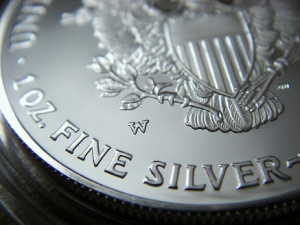Have Metals Finally Bottomed?
Dear readers,
Before I start this article I would like to wish my American readers all around the world “Happy 4th of July Independence Day.”
I completely understand that you might think I am crazy for trying to call a bottom in the metals & mining sector. I probably am. Furthermore, I understand the “China slowdown” mindset very well. After all, the interesting fact has been how strong Chinese growth has been and how the country hasn’t experienced one simple recession yet (similar to Australia, where we have not had a technical recession is over 20 years). Quite amazing feat to be honest, but eventually we will have a mean reversion (in both countries).
Personally, I have been expecting the negative surprise and even a potential recession to occur since late 2010. I rightfully warned my business partners from expanding the mining exploration company back in those days. My view was that the Chinese slowdown, which hardly anyone believed would happen at the time, could depressed metal prices and send the mining industry into a downturn.
Chart 1 & 2: Any asset linked to the Chinese economy is under-owned!
Source: Merrill Lynch Fund Manager Survey (edited by Short Side of Long)
Fast forward more than three years later. How the conditions changed. These days, pessimism on anything China related is such a strong prevailing thought pattern in investors minds, that a simple comment like the headline of this article is surely bound to resolve in some sort of an argument, where I get called an idiot (sometimes words used aren’t that polite either haha).
If we refer to Chart 1 & 2 we can see that majority of global fund managers are now underweight commodities (back in those days extremely overweight) and their number one worry is Chinese economic hard landing or a financial crisis. Some even say that China is about to go through Lehman two point zero, while others call China “Dubai on steroids”. One thing is true, Red Dragon’s economy has been slowing and metal prices have experienced a very powerful bear market over the last three years or so.
But markets are a discount mechanism. They anticipate the future, because the past and the present are already in the price. So now the question has to be, what comes next? More negativity? Or has the bear market worked its magic? My grandfather taught me very well that whatever goes up, must go down. But he failed to teach me that whatever goes down, eventually might also go back up, too. He wasn’t an investor, you see. So today’s article is all about those assets that went down a lot and their potential for a recovery.
Chart 3: Metal commodities have been basing for a year. Break out next?
Source: Short Side of Long
We have seen ongoing negativity towards the metals sector in the media as of late. Whether its missing copper used as collateral funding, fraudulent activities with Gold imports, oversupply of inventory at the LME warehouses, slowing Chinese commodity imports and so forth. And yet it seems that the metals & minion sector is refusing to make new lows, even as bad news circles around like a bad smell. It was early in my learning process that I came across the wisdom of Marc Faber, who frequently states that:
“When the price of an asset fails to make a new low on unfavourable news, it could be starting to price in more favourable conditions. The inverse is also true for an asset that fails to make a new high, under very favourable conditions.”
If we observe Chart 3, we should be able to notice that the Rogers Metals Index (NYSE Symbol: RJZ) has been basing since June 2013 and has failed to make new lows for a year now. As a matter of fact, recently the index has started to rally and is now challenging the downtrend line. In coming weeks, it might even possibly attempt a break out.
The reason I like using this index as a barometer of metal prices is because its weighting is by far the most balanced. Most important components are Copper (19%), Aluminium (19%), Gold (14.2%), Silver (9.5%), Lead (9.5%), Zinc (9.5%) and Platinum (8.5%), with other metals hold lower weighting. To get a better understanding of the overall sector, let us look at the breadth of the index and what some of the individual metal prices are currently doing.
Chart 4: Copper has now broken out, despite being disliked & disowned
Source: Short Side of Long
Firstly, we have some positive developments with Copper. After a prolonged bear market, which has been in place since February 2011, the price of Copper has finally staged a break out this week. It remains to be seen how constructive this bullish movement will be, but one thing is worth noting for sure: hedge funds and other speculators have been heavily shorting this metal throughout 2013 and 2014. If the metal now bottoms and stages a decent rally, hedge funds will once again prove their value in being “dumb money”.
Next, focusing our attention on Aluminium in the chart below, we can see just how severe and painful the bear market has been. From its peak in 2011, the metal was down at much as 50%, if not more. Apply the contango to the total return of the metal and the recent lows seen in February of 2014 are actually even lower then the bottoming trough in March 2009. This is truly one depressed asset and it won’t take much to create an upside surprise!
Technically speaking, we have some positive developments as of late. The price has finally broken above its downtrend line, which has been in place of years. Moreover, the metal is now also trading above the 200 day moving average. Momentum is finally turning positive and a break above $20 in the ETF could signal an uptrend. Remember that both Copper and Aluminium make up almost 40% of the index, so keep your eye on both of these metals.
Chart 5: Aluminium has been basing for 6 months, soon to join the rally?
Source: Stock Charts (edited by Short Side of Long)
While most readers are quite familiar with Gold, I would rather investors focus on Silver right now. Silver is without a doubt the most oversold major asset over the last 3 years (even beating Aluminium). It has tanked by more then 60% from its May 2011 peak near $50 per ounce. Even though this article might prove to be wrong and the metal might not yet be at a final low, nevertheless it still offers tremendous value even now (in both nominal and relative terms).
Interestingly, just like Copper, it has also recently staged a breakout from its 3 year downtrend line. This is a bullish development so far, as long as the rally doesn’t fizzle out once again, the way it has during previous attempts. In similar fashion to other components within the index, Silver’s lowest low was registered in June 2013… exactly one year ago.
Despite the unfavourable conditions where we are constantly reminded that the QE program is ending via Fed’s taper, the price has refused to make lower lows and so far seems to be building a basing pattern. A break above $22 at first, followed by $25 later, would signal that the uptrend has once again returned. If accomplished in coming months and quarters, by definition the precious metal would be making higher highs and higher lows.
Chart 6: Most oversold metal in the last 3 years was Silver… down 60%!
Source: Short Side of Long
Copper, Silver and Aluminium are the most depressed metals on a three year rolling performance. However, other metals within the index are also staging favourable price action developments. Consider the fact that Platinum has been basing for awhile now and is attempting a breakout as I write this; despite constant negativity towards it Nickel has already posted tremendous upside move this year; while Palladium is currently in progress of hitting 52 week new highs as it moves above the 2011 level.
As as importantly, it is not only the metals that are moving up on the upside. The mining sector is once again showing signs of life. In the chart below, I have constructed a grid of Copper Miners (upper left), Coal miners (lower left), global junior mining companies (upper right) and global gold mining companies (lower right). All of these sectors (and many others such as Steel) are either breaking out from their prolonged downtrends or are attempting to do so right now. Big miners such as BHP Billiton, Rio Tinto, Freeport McMoran and Anglo American have all been moving on the upside in recent months.
The final point I would like to make is that it seems majority of these inflationary metal assets and global mining companies bottomed out in December 2013, just as Christine Lagarde was warning the world’s leaders and policy about deflation. How ironic… maybe it is inflation that they should be worried about!
Chart 7: Important pivot in mining sector was June and December 2013
Source: Stock Charts (edited by Short Side of Long)
I have to admit, this is a very hard call to make and can easily be wrong (it happens to anyone as markets are a great humbling teacher). It has to be said that I am not the most experienced market investor and making huge calls on a major asset class (equities, bonds or in this case metal commodities) is not that easy. But I am courageously sticking my neck out here and stating that we have most likely seen the lows for the broad metals & mining sector. Once again, I leave you all with the wise words from Mr Faber who recently stated:
My experience has been that in successful businesses and fund management companies, which performed well over the long-term, some courageous decisions were taken. Courageous fund managers reduce their positions when markets become frothy and accumulate equities when economic and social conditions are dire.
They avoid the most popular sectors, which are therefore over-valued, and invest in neglected sectors because being neglected by investors they are by definition inexpensive. The point is that it is very hard and that it takes a lot of courage for a fund manager to avoid the most popular sectors and stocks and to invest in unloved assets.
Finally, every investor understands the principle ‘buy low and sell high’, but when prices are low nobody wants to buy. ~ Marc Faber













